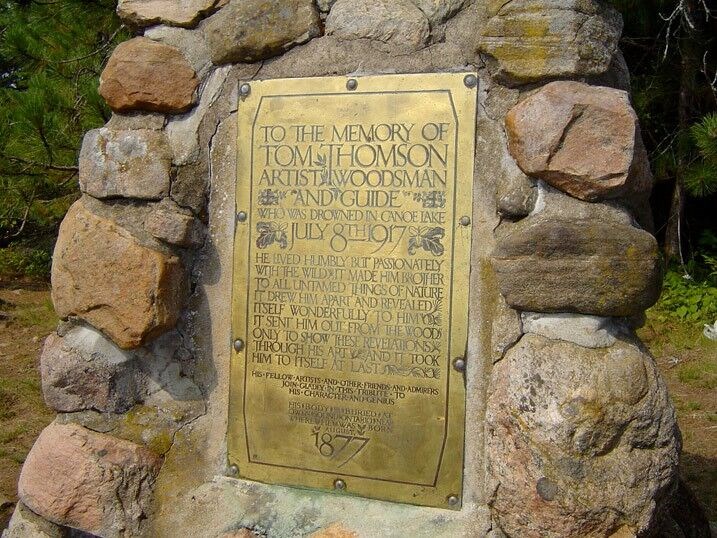Well Tom Thomson came paddling past
I'm pretty sure it was him
And he spoke so softly in accordance
With the growing of the dim
He said, "Bring on the brand new renaissance
'Cause I think I'm ready
Well I've been shaking all night long
But my hands are steady"
- Three Pistols by The Tragically Hip
If you enjoy iconic Canadian art and are heading south this week, are planning to go camping in Algonquin Park, or are just looking for something interesting to do, take a detour down Highway 60 near Huntsville and you will be in for a real treat.
The Algonquin Art Centre is recognizing the life and works of Canadian painter and outdoorsman Tom Thomson with a series of honours this week. The crown jewels will be the exhibition, until July 16, of two privately-owned Thomson originals, View from a Height, Algonquin Park and Northern Lake.
The painter was bestowed posthumously with the Friends of Algonquin Park Directors Award, Saturday. Author Roy MacGregor was on hand to present the award that recognizes "an individual who has made a significant contribution to the appreciation of Algonquin Park."
Thomson lived, worked as a guide and park ranger, and painted his most famous works in Algonquin Park between 1912 and his death. According to the Friends of Algonquin Park, "Tom Thomson continues to foster [an] appreciation of Algonquin Park through his hundreds of striking Algonquin Park paintings that are today known the world over."
A new permanent outdoor exhibit, the Tom Thomson Legacy Path was unveiled in conjunction with the Directors Award and is now open to the public. The Legacy Path "includes interpretive panels that share the story of Tom Thomson’s time in Algonquin Park."
Also of interest is a special exhibit entitled Algonquin Park in the 1910s - A Tom Thomson Perspective, touted to glean insight into what life was like in the park when Thomson was working and living there.
The events coincide with the centenary of Thomson's death by drowning in Canoe Lake, in Algonquin Park. The circumstances surrounding Thomson's untimely demise on July 8, 1917, at age 39, continue to be scrutinized and gossiped about, and the intrigue has given the story of Thomson's death a place in Canadian lore.
According to the doctor and coroner who examined Thomson's body, the official cause of death was an accidental drowning. Thomson, an avid canoeist, had set out on the lake on July 8, 1917. His body was discovered floating in Canoe Lake eight days later. Thomson was said to have a large gash on his head, and the theory was that he had slipped or fallen and struck his head, rendering him unconscious as he hit the water and leading to his drowning.
The folklore surrounding his death included reports of a love triangle, his body being interred in Algonquin Park, dug up, and moved to Leith, Ont., and reports of a ghostly figure resembling Thomson being spotted on Canoe Lake and then disappearing into thin air. Some have theorized that Thomson perished as a result of suicide or murder. Thomson's death has become the stuff of Canadian legend and has inspired numerous books and poems to be written about the subject. Several stamps have been issued portraying Thomson's works. Canadian musical act The Tragically Hip reference the ghost of Tom Thomson paddling past in the song lyrics to Three Pistols listed above.
While painting in Algonquin Park, Thomson inspired several of the Canadian artists who formed the renowned Group of Seven shortly after his death. His unique mixture of colours and broad brushstrokes make works such as The West Wind and The Jack Pine transcendent depictions of the rugged Canadian wilderness.



